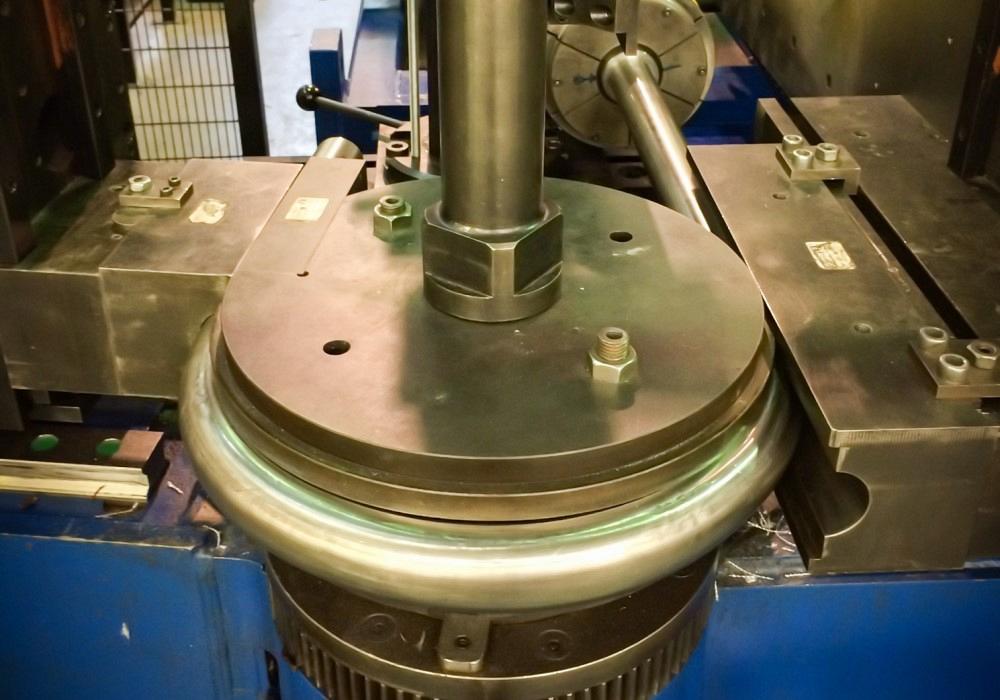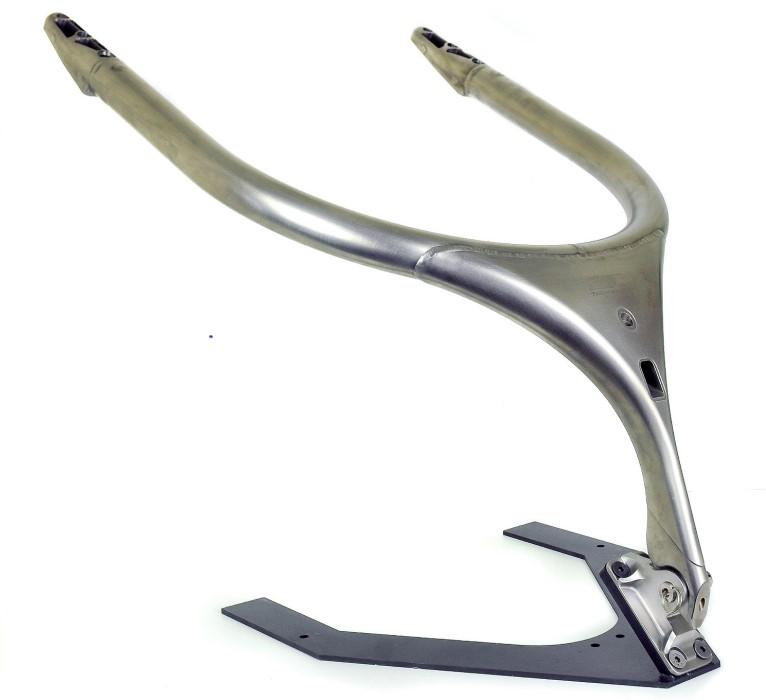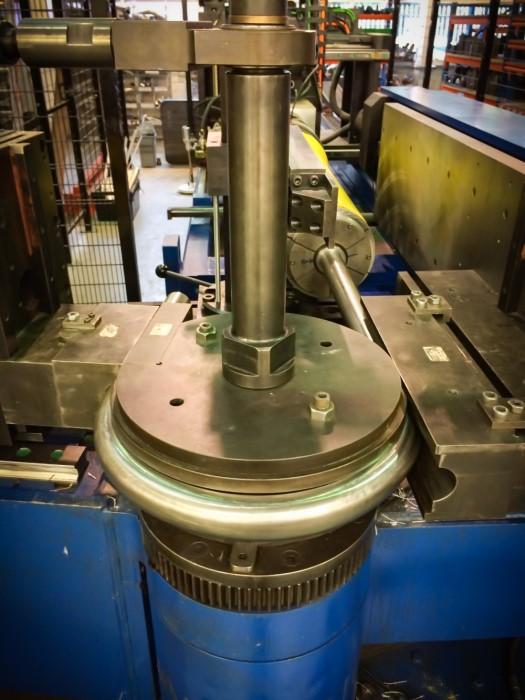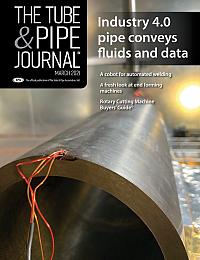- FMA
- The Fabricator
- FABTECH
- Canadian Metalworking
Categories
- Additive Manufacturing
- Aluminum Welding
- Arc Welding
- Assembly and Joining
- Automation and Robotics
- Bending and Forming
- Consumables
- Cutting and Weld Prep
- Electric Vehicles
- En Español
- Finishing
- Hydroforming
- Laser Cutting
- Laser Welding
- Machining
- Manufacturing Software
- Materials Handling
- Metals/Materials
- Oxyfuel Cutting
- Plasma Cutting
- Power Tools
- Punching and Other Holemaking
- Roll Forming
- Safety
- Sawing
- Shearing
- Shop Management
- Testing and Measuring
- Tube and Pipe Fabrication
- Tube and Pipe Production
- Waterjet Cutting
Industry Directory
Webcasts
Podcasts
FAB 40
Advertise
Subscribe
Account Login
Search
Bending titanium to make racing safer
Despite challenging material, fabricator makes sturdy halos for Formula cars
- Updated February 24, 2021
- March 16, 2021
- Article
- Tube and Pipe Fabrication

SST Technology, one of just three companies authorized to make the halo for Formula cars, uses a Unison Breeze all-electric bender to get the job done.
Professional racing isn’t just a matter of driving as fast as possible. If that were the case, anyone could do it. Racing requires a lot of judgment to keep the car under control, proceeding rapidly and safely to snag the checkered flag. Wrecked cars don’t win races.
In racing communities, many folks revere not only the most winning drivers but also the people who did the most to advance safety in the sport. Many drivers owe their lives to those who led the way in requiring the use of items such as helmets, safety harnesses, flame-retardant suits, and roll cages.
A recent development for cars with open cockpits is a structure that surrounds the driver’s head and is attached to the car’s frame at three points. Known as the halo, it became a requirement in 2018 for Formula 1, 2, 3, 4, and E. Just three companies supply halos to Formula teams: CP Autosport (Büren, Germany), V System s.r.l. (Modena, Italy), and SST Technology (Eynsham, Oxfordshire, U.K.). To make halo systems from titanium tubing, SST Technology uses a Breeze 130, an all-electric tube bender from Unison.
Power and Control
Like the speed and control drivers need to win, modern benders must excel at power and control. Early electric bending machines provided exceptional control over every axis, and the capability to deliver power in the form of bending torque has grown since then.
SST purchased the machine to produce optimal-flow exhaust systems for Formula 1, IndyCar and other motorsports sectors. With a pedigree in motorsport components and the new bending machine, the company quickly focused on driver safety. The material control, production parameters, and dimensional tolerances provided by the machine, combined with SST’s considerable experience in the development and manufacture of ultraprecise fabrications, led to its halo design, which requires precise bending of titanium tube of 4 mm wall thickness.
The inherent challenge is that titanium is notoriously difficult to bend. It has low uniform elongation, so it typically requires much greater bend radii than other metals. A traditional forming method is hot bending, which uses super-heated tooling, but the process requires machinery modifications and lengthy heating times, and it poses hazards to the machine operators. Modern electric benders use servomotors to maintain precise control over the bending process, facilitating successful cold bending. In addition, multistack tooling allows complex parts to be formed in one uninterrupted manufacturing cycle.
In addition to handling the titanium halo, the machine is well-suited to other exotic alloys, such as INCONEL alloy and super-duplex stainless steels, as well as thin-wall materials. The machine helps to prevent bending errors by importing IGES or STEP files, and its bar code scanning system ensures that only the correct tooling is installed. Its standard-fit, rise-and-fall pressure die can result in reduced tooling costs.
Beyond the Formula Series

Notoriously difficult to form, titanium was designated as the only material for a driver protection device mandated for Formula, IndyCar, and other open-cockpit racing series.
The halo isn’t just a Formula safety device. Its use has caught on in open-cockpit cars in the U.S., Japan, and Australia, notably in the IndyCar series, Super Formula, and the Australian S5000 Championship, respectively.
Like many other mandates, the halo was met with skepticism by some racers when it was introduced in the Formula series cars. However, it didn’t take long to prove itself. In a Formula 2 race in Spain in 2018, the car driven by Nirei Fukuzumi landed on top of Tadasuke Makino’s car and made contact with the halo. A three-way crash in the same year in the Belgian Grand Prix, one involving Nico Hülkenberg, Fernando Alonso, and Charles Leclerc, resulted in damage to the halos of both Alonso and Leclerc. After a 2020 crash involving Romain Grosjean and Daniil Kvyat in Bahrain, Grosjean’s halo hit a safety barrier. In most of these cases, the drivers weren’t hurt. Grosjean was hospitalized, but the injuries weren’t life-threatening.
While it’s hard to be certain whether a halo prevented an injury or fatality, several drivers have credited the halo with saving their lives.
About the Publication
subscribe now

The Tube and Pipe Journal became the first magazine dedicated to serving the metal tube and pipe industry in 1990. Today, it remains the only North American publication devoted to this industry, and it has become the most trusted source of information for tube and pipe professionals.
start your free subscription- Stay connected from anywhere

Easily access valuable industry resources now with full access to the digital edition of The Fabricator.

Easily access valuable industry resources now with full access to the digital edition of The Welder.

Easily access valuable industry resources now with full access to the digital edition of The Tube and Pipe Journal.
- Podcasting
- Podcast:
- The Fabricator Podcast
- Published:
- 04/16/2024
- Running Time:
- 63:29
In this episode of The Fabricator Podcast, Caleb Chamberlain, co-founder and CEO of OSH Cut, discusses his company’s...
- Trending Articles
Team Industries names director of advanced technology and manufacturing

Orbital tube welding webinar to be held April 23

Zekelman Industries to invest $120 million in Arkansas expansion

Push-feeding saw station cuts nonferrous metals

3D laser tube cutting system available in 3, 4, or 5 kW

- Industry Events
16th Annual Safety Conference
- April 30 - May 1, 2024
- Elgin,
Pipe and Tube Conference
- May 21 - 22, 2024
- Omaha, NE
World-Class Roll Forming Workshop
- June 5 - 6, 2024
- Louisville, KY
Advanced Laser Application Workshop
- June 25 - 27, 2024
- Novi, MI



























